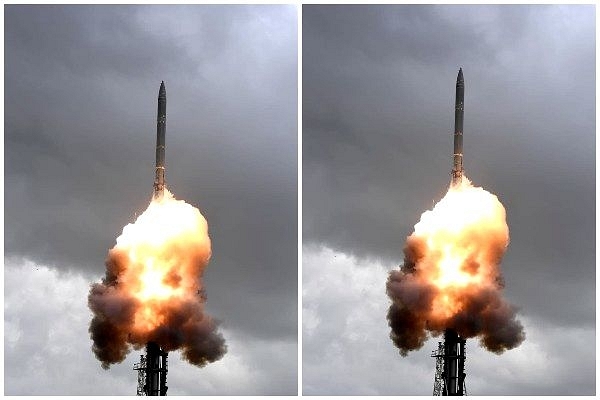News Brief
Trouble For Chinese Submarines In Indian Ocean: Here’s How India’s New Submarine-Killer Weapon Works
- Deployed in the eastern Indian Ocean, SMART can target Chinese submarines trying to enter into the region through congested choke points.

Supersonic Missile Assisted Release of Torpedo.
Earlier this month, India test-fired a new anti-submarine warfare (ASW) weapon — a supersonic missile that carries a lightweight torpedo as its warhead.
Called Supersonic Missile Assisted Release of Torpedo, or SMART, this weapon is being developed as a strike option against enemy submarines lurking outside the range of torpedoes. The weapon can be fired from an Indian Navy warship or a shore-based missile-launch facility to target enemy submarines at long ranges.
The supersonic missile used in this weapon system carries the lightweight torpedo as its warhead. When the missile reaches the required range and altitude, the nose cone separates and and the torpedo is released.
After it is released, the torpedo uses a parachute to reduce its velocity. After it enters water, the torpedo uses its own guidance system to look for its target.
Lightweight torpedoes have a range of around 20-25 kilometres. If the naval platform carrying a lightweight torpedo has to hit a submarine, it can do so only if the target submarine is in this range. If not, the torpedo-carrying platform will have to get closer to the target, which will put it at risk. The target submarine can hit and sink the platform if it manages to detect its presence.
Such a scenario can be avoided with the use of supersonic missile assisted release of torpedo. By using a supersonic missile to release the torpedo, a naval platform can hit an enemy submarine from a stand-off range.
In India’s case, this range could be around 650 kms.
“DRDO has taken up a project to develop... a missile-assisted release of anti-submarine torpedo system for ASW operations far beyond torpedo range (50-650 km),” the Ministry of Defence said in its annual report for 2018-19.
The Indian weapon system uses Torpedo Advanced Light (TAL), also known as the Shyena, as warhead. It has a range of around 19 km.
This weapon system can be used when an enemy submarine has been detected. Many anti-submarine warfare platforms can be used for this purpose.
Indian Navy warships, ASW helicopters operating from them (India will soon get MH-60R ASW helos), and P8-I maritime patrol aircraft can detect enemy submarines and pass on targeting information to sea-based platforms and shore-based facilities equipped with ‘SMART’ ASW weapon system.
The test of this weapon system comes at a time when the presence of Chinese submarines in the Indian Ocean is on the rise. Chinese submarines have been detected and tracked in the Indian Ocean by the Indian Navy in the past.
Pakistan is also set to get at least eight Chinese submarines equipped with air independent propulsion over the next few years.
Deployed in the eastern Indian Ocean, SMART can target Chinese submarines trying to enter into the region through congested choke points. Pakistani submarines can be hit from facilities located on the western seaboard.
Support Swarajya's 50 Ground Reports Project & Sponsor A Story
Every general election Swarajya does a 50 ground reports project.
Aimed only at serious readers and those who appreciate the nuances of political undercurrents, the project provides a sense of India's electoral landscape. As you know, these reports are produced after considerable investment of travel, time and effort on the ground.
This time too we've kicked off the project in style and have covered over 30 constituencies already. If you're someone who appreciates such work and have enjoyed our coverage please consider sponsoring a ground report for just Rs 2999 to Rs 19,999 - it goes a long way in helping us produce more quality reportage.
You can also back this project by becoming a subscriber for as little as Rs 999 - so do click on this links and choose a plan that suits you and back us.
Click below to contribute.
Latest